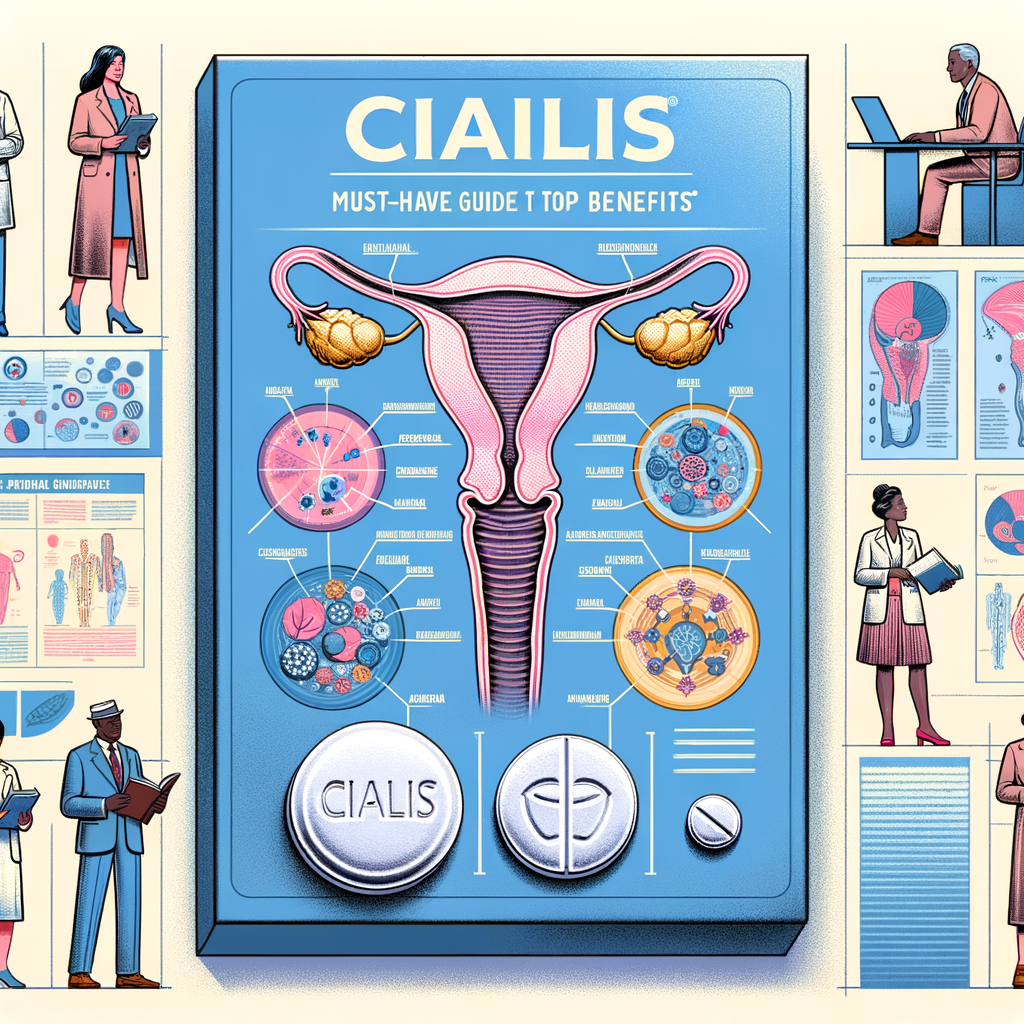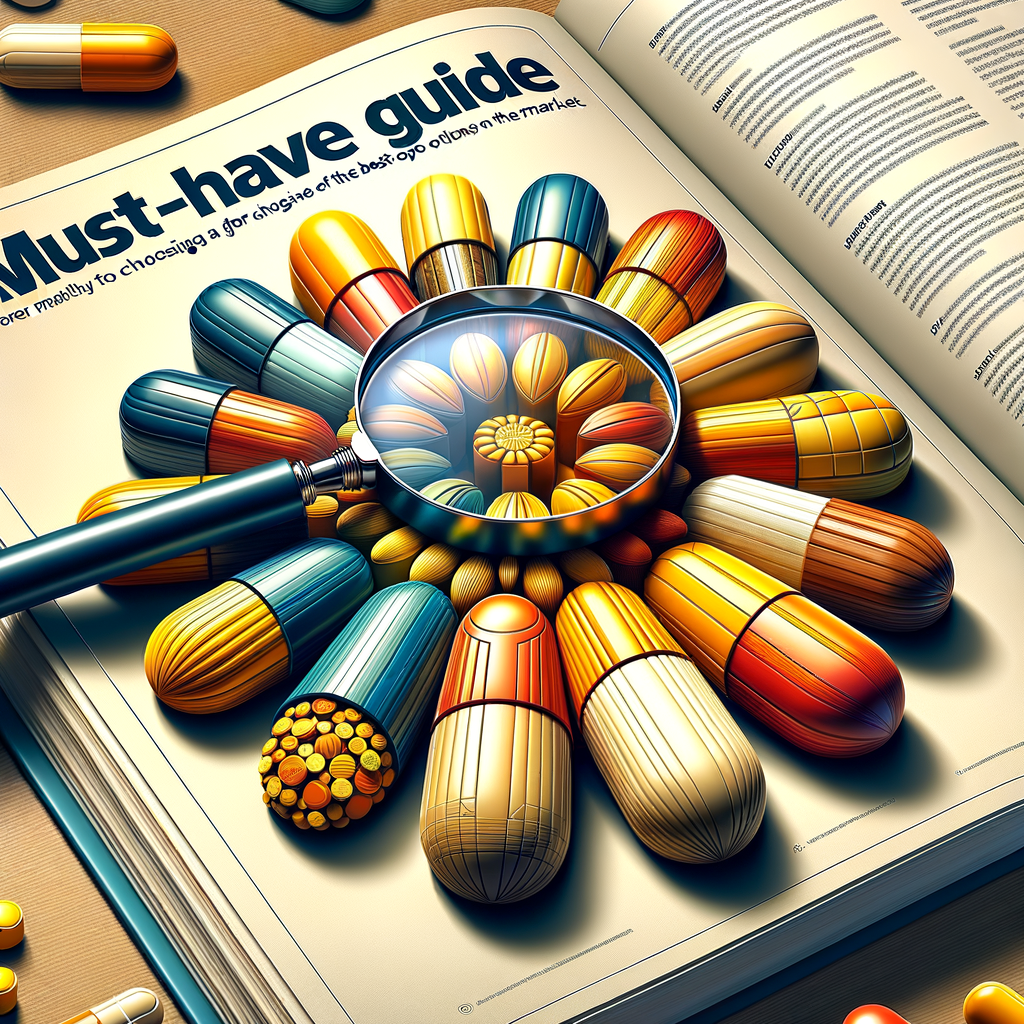- Understanding Cialis (Tadalafil) and How It Works
- Why Some Clinicians Consider Cialis for Women
- Top Potential Benefits of Cialis for Women
- Evidence Summary: What Research Shows
- Who Might Benefit Most
- Dosage and Administration Basics
- Possible Side Effects and Safety Considerations
- Contraindications and Drug Interactions
- Comparing Cialis to Other Options for Female Sexual Dysfunction
- How to Talk to Your Doctor About Trying Cialis
- Realistic Expectations: What Cialis Can and Cannot Do
- Combining Cialis with Other Treatments
- Lifestyle Changes That Complement Cialis
- Special Considerations: Menopause and Genitourinary Syndrome
- Cialis for Sexual Side Effects of Antidepressants
- Monitoring and Follow-Up While Using Cialis
- Legal and Ethical Considerations of Off-Label Use
- Cost, Access, and Generic Options
- Key Takeaways and Practical Tips
- Frequently Asked Questions (FAQs)
- References
Cialis In Women: Must-Have Guide to Top Benefits
Understanding Cialis (Tadalafil) and How It Works
Cialis is the brand name for tadalafil. Doctors originally developed it to treat erectile dysfunction in men. However, some researchers and clinicians have explored its effects in women. The drug works by widening blood vessels. Consequently, blood flow increases to targeted tissues.
Tadalafil inhibits the enzyme phosphodiesterase type 5 (PDE5). As a result, the drug increases cyclic GMP levels. That causes smooth muscle relaxation and vasodilation. In women, improved blood flow in the pelvis may affect sexual arousal and genital sensitivity.
Why Some Clinicians Consider Cialis for Women
Many sexual problems in women have a physical blood flow component. For instance, arousal requires increased genital blood flow and swelling. Therefore, enhancing blood flow might help some women. Clinicians consider tadalafil when other treatments fail.
Moreover, some women experience sexual dysfunction due to medical conditions. These include diabetes, pelvic surgery, or vascular disease. In such cases, tadalafil may restore part of the physiological response. Still, clinicians use it off-label because authorities have not approved it for general female sexual dysfunction.
Top Potential Benefits of Cialis for Women
Tadalafil may provide several potential benefits for women. First, it can increase genital blood flow and lubrication. Second, it may heighten genital sensitivity. Third, it may help with sexual arousal and orgasm for some users. Each benefit varies by individual and cause.
Additionally, tadalafil might aid women with vascular or neurological problems. That includes those with diabetic neuropathy or pelvic trauma. Many reports show subjective improvement in arousal or satisfaction. However, not all studies show consistent results.
Evidence Summary: What Research Shows
Researchers have studied tadalafil in women with mixed outcomes. Some small randomized trials noted modest improvements in sexual function. Other trials found no significant benefit over placebo. The variability often stems from differing definitions and study populations.
Most trials are small and short-term. Many involve women with specific medical conditions, like diabetes. Thus, results may not generalize. Overall, evidence remains limited and inconclusive. Clinicians should interpret results cautiously.
Who Might Benefit Most
Women with vascular causes of sexual dysfunction may benefit most. That includes older women and those with cardiovascular disease. Also, women with neurological conditions that reduce pelvic blood flow might see gains.
Conversely, women whose sexual problems stem mainly from relationship or psychological issues may not benefit. Likewise, those with hormonal imbalances typically need targeted hormonal therapy. Therefore, correct diagnosis matters before trying tadalafil.
Dosage and Administration Basics
Tadalafil comes in several doses. Common tablets include 2.5, 5, 10, and 20 mg. Men often use 5–20 mg for on-demand dosing. They also use a daily low-dose option. For women, clinicians may prescribe similar regimens off-label.
A typical approach involves starting at 10 mg before sexual activity. If the effect seems too strong or causes side effects, clinicians cut the dose. Some prefer daily low-dose therapy for more spontaneity. Always follow a healthcare provider’s instructions.
Possible Side Effects and Safety Considerations
Tadalafil causes side effects similar in men and women. Common issues include headache, flushing, nasal congestion, and indigestion. Muscle or back pain can appear within 12–24 hours. These effects usually resolve within a day or two.
Serious adverse events are rare but can occur. Tadalafil can lower blood pressure, which risks dizziness or fainting. It can dangerously interact with nitrate medications. Therefore, healthcare providers must review all drugs before prescribing tadalafil.
Contraindications and Drug Interactions
Do not combine tadalafil with nitrates. The interaction can cause severe hypotension. Also avoid tadalafil with certain alpha-blockers unless monitored closely. Some antifungal and antibiotic medications increase tadalafil levels. As a result, they may heighten side effects.
Women who are pregnant or breastfeeding should avoid tadalafil. Data in pregnancy remain limited. In addition, women with severe heart disease should not use tadalafil without cardiology clearance. Always disclose all medical conditions and medications.
Comparing Cialis to Other Options for Female Sexual Dysfunction
Several treatments aim at female sexual dysfunction. They include hormonal therapies, centrally acting drugs, topical gels, and counseling. Flibanserin (Addyi) and bremelanotide (Vyleesi) target low sexual desire. Hormone therapy helps those with estrogen deficiency.
Below is a simple comparison table to help you weigh options:
| Treatment | Mechanism | Best for | Approval status |
|—|—:|—|—:|
| Tadalafil (Cialis) | PDE5 inhibitor; increases genital blood flow | Vascular-related arousal issues (off-label) | Not FDA-approved for women |
| Flibanserin (Addyi) | Central serotonergic agent | Low sexual desire in premenopausal women | FDA-approved |
| Bremelanotide (Vyleesi) | Melanocortin receptor agonist | Low sexual desire in premenopausal women | FDA-approved |
| Topical estrogen | Restores vaginal tissue, lubrication | Genitourinary syndrome of menopause | FDA-approved (various formulations) |
| Counseling/therapy | Addresses psychological/relationship factors | Psychogenic sexual dysfunction | Standard care |
This table simplifies complex choices. Therefore, consult a clinician for personalized guidance.
How to Talk to Your Doctor About Trying Cialis
Be open about symptoms and history. Describe when problems started and how they affect daily life. Share medical conditions and all medications you take.
Ask about the rationale for tadalafil in your case. Request details on expected benefits and potential risks. Also, discuss alternatives and monitoring plans. Finally, ask about cost, access, and follow-up timing.
Realistic Expectations: What Cialis Can and Cannot Do
Tadalafil may improve blood flow and some arousal symptoms. However, it rarely cures complex sexual issues alone. Many women need combined approaches for best results. That includes counseling, hormonal treatment, and lifestyle change.
Moreover, individual responses vary widely. Some women notice clear benefits. Others see little or no change. Give any trial sufficient time and proper dosage. Then reassess with your clinician.
Combining Cialis with Other Treatments
Clinicians sometimes combine tadalafil with hormonal therapy. For menopausal women, topical estrogen plus tadalafil may improve results. Also, combining medication with sex therapy often yields better outcomes.
However, combining drugs increases the risk of interactions and side effects. Therefore, clinicians tailor therapy and monitor closely. Always avoid unsafe drug combinations like nitrates.
Lifestyle Changes That Complement Cialis
Lifestyle changes can boost sexual function. Exercise improves circulation and mood. Stop smoking to enhance blood vessel health. Maintain a healthy weight for hormonal balance.
Additionally, reduce alcohol intake and treat sleep problems. Addressing stress and improving intimacy helps long-term. These changes often magnify any medication benefits.
Special Considerations: Menopause and Genitourinary Syndrome
Menopause brings hormonal changes that affect sexual health. Vaginal dryness and atrophy can reduce arousal and comfort. Topical estrogen therapy targets these symptoms directly.
Tadalafil does not replace estrogen therapy. However, it may help by improving blood flow to genital tissues. Combine therapies only under medical supervision. A tailored plan yields the best results.
Cialis for Sexual Side Effects of Antidepressants
Some antidepressants cause sexual side effects in women. These include reduced libido and difficulty reaching orgasm. Researchers have tested PDE5 inhibitors for this issue.
Results remain mixed. Some patients report benefit, especially for arousal and orgasmic problems. Still, clinicians often try dose modification, drug holidays, or switching antidepressants first. Always consult the prescribing physician before adding tadalafil.
Monitoring and Follow-Up While Using Cialis
Start with a clear baseline evaluation. Track symptoms and side effects during the trial. Keep a symptom diary that notes frequency, satisfaction, and adverse effects.
Schedule follow-up visits to reassess efficacy and safety. If side effects occur, adjust dose or stop. For ongoing benefit, plan periodic reviews and cardiovascular assessments as needed.
Legal and Ethical Considerations of Off-Label Use
Prescribing tadalafil to women usually represents off-label use. That means the FDA has not approved it specifically for female sexual dysfunction. Off-label prescribing remains legal when clinicians believe it benefits the patient.
Clinicians should discuss evidence, risks, and alternatives. Informed consent matters. That helps patients make decisions aligned with their values and goals.
Cost, Access, and Generic Options
Tadalafil is available as a generic medication. Generic versions often cost much less than brand name tablets. Insurance coverage varies widely for off-label use.
Ask your clinician about prescription assistance programs. Also, compare pharmacy prices and consider mail-order options. Be wary of online pharmacies that do not require a prescription.
Key Takeaways and Practical Tips
Tadalafil may help some women, mainly those with vascular-related dysfunction. Evidence remains limited and mixed. Always consult your healthcare provider before starting tadalafil.
Use a holistic approach. Combine medical, psychological, and lifestyle strategies. Monitor progress and side effects closely. Finally, stay informed and advocate for careful, individualized care.
Frequently Asked Questions (FAQs)
1. Is Cialis approved for use in women?
– No. The FDA has not approved tadalafil for female sexual dysfunction. Doctors may prescribe it off-label in certain cases.
2. How quickly does tadalafil work in women?
– Effects vary. Some women notice changes within 30–60 minutes. Others need several doses over weeks to see differences.
3. What dose should women take?
– No official dosing guidelines exist for women. Providers often start with 10 mg for on-demand use or 5 mg daily. Your clinician will tailor the dose.
4. Can pregnant or breastfeeding women use tadalafil?
– No. Safety data are limited. Avoid tadalafil during pregnancy and breastfeeding unless a doctor advises otherwise.
5. Are side effects in women the same as in men?
– Largely yes. Women report headache, flushing, nasal congestion, and back pain. Serious effects remain rare.
6. Can tadalafil cause long-term sexual changes?
– There is no strong evidence of lasting sexual changes after stopping the drug. Most effects disappear with discontinuation.
7. Will tadalafil help if my sexual problems are due to stress or relationship issues?
– Probably not on its own. Counseling and couples therapy usually help more in those cases.
8. Can I take tadalafil with birth control pills?
– Yes. No known interaction exists between tadalafil and hormonal contraceptives. Still, confirm with your provider.
9. How does tadalafil compare with Addyi or Vyleesi?
– Addyi and Vyleesi act on the brain to increase desire. Tadalafil works peripherally by increasing blood flow. The best option depends on the cause of dysfunction.
10. Where can I find reliable information or support?
– Start with your healthcare provider. You can also consult professional societies and peer-reviewed studies for up-to-date research.
References
– U.S. Food and Drug Administration — Tadalafil (Cialis) prescribing information: https://www.accessdata.fda.gov/drugsatfda_docs/label/2016/021368s022lbl.pdf
– Althof SE, et al. “The Safety and Efficacy of Phosphodiesterase Type 5 Inhibitors in Women.” Journal of Sexual Medicine. https://pubmed.ncbi.nlm.nih.gov/ (search for related reviews)
– Hatzimouratidis K, et al. “European Association of Urology Guidelines on Sexual and Reproductive Health.” https://uroweb.org/guideline/sexual-and-reproductive-health/
– Graziottin A, et al. “Pharmacotherapy of Female Sexual Dysfunction.” International Journal of Impotence Research. https://pubmed.ncbi.nlm.nih.gov/ (search for tadalafil in women)
– Kingsberg SA, et al. “Evaluation of Flibanserin and Bremelanotide for HSDD.” Obstetrics & Gynecology. https://pubmed.ncbi.nlm.nih.gov/
(For specific study links and more detailed bibliographic entries, you may search PubMed and FDA resources using the titles above.)



